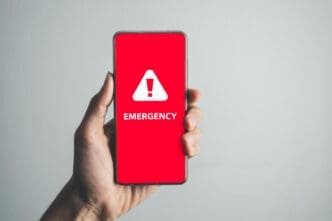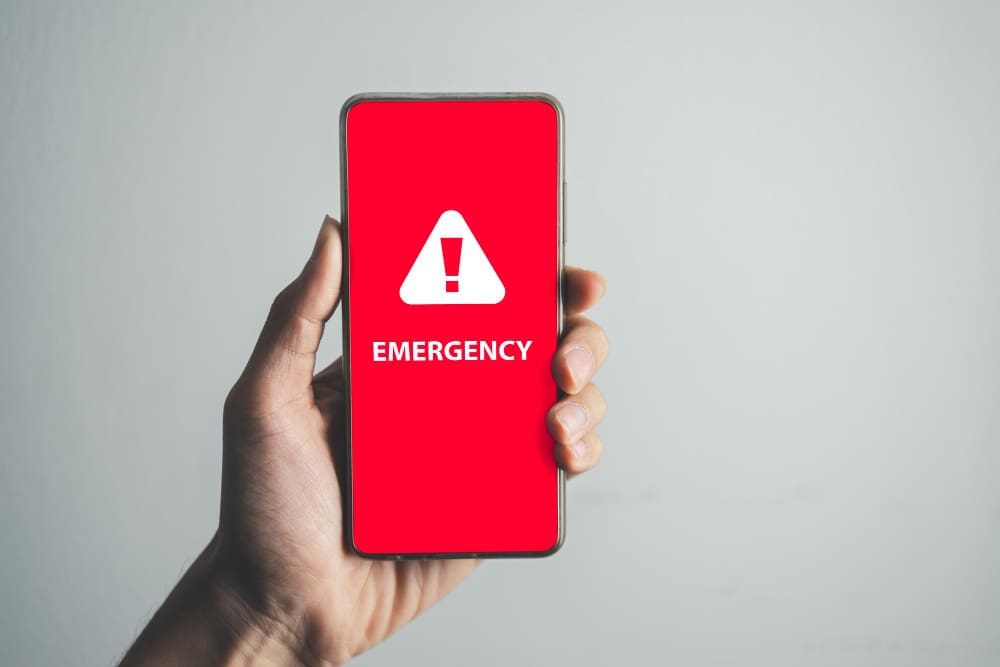For the millions of people who experience anxiety, the sudden onset of overwhelming fear, panic, or worry can feel like a mental ambush. In these “emotional emergencies,” a personalized, pre-assembled “anxiety toolkit” can serve as a critical first-aid kit for the mind. This tangible collection of physical and digital items is designed to ground you in the present moment, de-escalate the body’s fight-or-flight response, and provide immediate, accessible support when you need it most. By engaging the senses and providing a structured coping plan, an anxiety toolkit empowers individuals to manage acute symptoms, whether they strike at home, at work, or in a crowded public space.
An anxiety toolkit is more than just a collection of comforting objects; it is a proactive strategy rooted in psychological principles. It works by interrupting the feedback loop that fuels panic and anxiety. When the brain’s threat-detection center, the amygdala, becomes overactive, it triggers a cascade of physical symptoms like a racing heart, shallow breathing, and dizziness. The toolkit helps shift your focus away from these internal sensations and onto external, predictable stimuli, thereby engaging the prefrontal cortex—the rational, “thinking” part of the brain—to regain control.
Building this kit is an act of self-compassion and preparedness. It acknowledges that difficult moments will happen, but it provides a concrete plan to navigate them. This preparation can significantly reduce the “fear of the fear,” a common cycle where the dread of having another panic attack becomes a trigger in itself.
Building Your Physical Toolkit: Engaging the Five Senses
The most effective toolkits are built around the five senses. By intentionally engaging sight, sound, touch, smell, and taste, you can anchor yourself in the present reality and disrupt the anxious thoughts spiraling in your mind. The goal is to choose small, portable items that you can easily carry in a pouch, a purse, or keep in a desk drawer.
Sight: Grounding Visual Cues
Visual input can powerfully shift your emotional state. Choose items that evoke feelings of safety, happiness, or calm.
Consider including a few cherished photos of loved ones, a beloved pet, or a picture of a place where you feel profoundly at peace, like a favorite beach or mountain trail. Looking at these images can activate positive memories and feelings, counteracting the negativity of anxiety.
A small, beautiful object like a smooth, colorful sea glass or a polished stone can also be effective. You can also write a few grounding phrases or affirmations on an index card, such as “This feeling is temporary,” or “I am safe right now.”
Sound: Curating a Calming Auditory Environment
Sound can either be a source of overstimulation or a tool for profound calm. Having a plan to manage your auditory environment is crucial.
The most important item in this category is a pair of headphones, preferably noise-canceling, to block out overwhelming external noise. On your phone, create a dedicated “calm” playlist with soothing instrumental music, nature sounds like rain or ocean waves, or binaural beats, which some research suggests can help reduce anxiety.
You can also download guided meditations, breathing exercises, or calming podcasts. Having these pre-loaded ensures they are ready the moment you need them, without the stress of searching for something new in a moment of panic.
Touch: The Power of Tactile Sensation
Tactile sensations are one of the fastest ways to ground yourself in your body and the present moment. Focus on items with interesting or soothing textures.
Fidget tools are excellent for this purpose. A simple stress ball, a piece of soft modeling clay or putty, a smooth worry stone to rub between your thumb and fingers, or a small, textured object can help release nervous energy.
A small piece of very soft fabric, like velvet or silk, can also be incredibly soothing to stroke. Some people find a small, weighted object, like a beanbag, provides a comforting pressure when held in their hands. The physical sensation demands your brain’s attention, pulling it away from anxious thoughts.
Smell: Tapping into the Limbic System
The sense of smell has a direct pathway to the limbic system, the brain’s emotional and memory center. This makes scent a powerful and fast-acting tool for shifting your mood.
Include a small vial of a calming essential oil, such as lavender, chamomile, or bergamot. You can place a few drops on a cotton ball kept in a tiny plastic bag or use a personal aromatherapy inhaler. A solid perfume stick or a small tube of scented hand lotion also works well.
Even a simple herbal tea bag can provide a soothing aroma. Carrying a peppermint or chamomile tea bag to inhale can be a discreet and effective way to access the calming power of scent.
Taste: A Sharp Distraction
A strong, distinct taste can act as a “pattern interrupt,” shocking your senses and breaking the cycle of a panic attack. The intensity of the flavor forces your focus onto the immediate physical sensation.
Very sour candies, like Warheads or other tart sweets, are a popular and effective choice. The intense sourness provides a jolt that can cut through the mental fog of anxiety.
Similarly, powerful mints, strong cinnamon gum, or a small piece of dark chocolate that you can let melt slowly in your mouth can achieve the same effect. The goal is to introduce a flavor so potent that it momentarily overrides everything else.
Crafting Your Digital Toolkit: Resources at Your Fingertips
In addition to physical items, your smartphone can be a powerful part of your anxiety toolkit. Dedicate a folder on your home screen to apps and resources that are specifically for managing your mental health in an emergency.
Essential Apps and Content
Many apps are designed to help with anxiety. Meditation and mindfulness apps like Calm or Headspace offer guided sessions for panic. Breathing apps can walk you through exercises like box breathing, which helps regulate the nervous system.
Apps based on Cognitive Behavioral Therapy (CBT) or Dialectical Behavior Therapy (DBT), such as Woebot, can provide in-the-moment coaching and thought-reframing exercises. It’s also helpful to have a folder of pre-saved calming videos, a digital album of happy photos, or a comforting audiobook ready to play.
Emergency Contacts
Your digital kit should include easily accessible contact information for your support system. Pin the numbers of your therapist, a trusted friend, or a family member you can call when you feel overwhelmed.
Crucially, save the 988 Suicide & Crisis Lifeline in your phone. Knowing that professional, confidential help is just three digits away can provide an essential sense of security.
Assembling and Using Your Toolkit Effectively
Once you have chosen your items, place them in a dedicated container. This could be a small zippered pouch, a makeup bag, or a specific compartment in your backpack or work bag. The key is that it’s portable, private, and easy to access quickly.
Do not wait for a panic attack to use your kit for the first time. Practice engaging with the items when you are calm. Figure out which scents, textures, and sounds work best for you. This familiarity will make it easier and more intuitive to use the kit during a high-stress moment.
When you feel a wave of anxiety rising, the first step is to, if possible, remove yourself from the triggering situation. Find a quieter space, like a restroom, an empty office, or your car. Then, open your toolkit and intentionally interact with one item at a time. Hold the smooth stone, inhale the lavender oil, and focus entirely on that single sensory experience before moving to the next.
When a Toolkit Isn’t Enough
It is vital to understand that an anxiety toolkit is a coping mechanism for acute symptoms; it is not a cure for an anxiety disorder. It is one tool in a much larger toolbox for managing mental health.
If you find that your anxiety is persistent, frequently interferes with your daily life, or if you are experiencing regular panic attacks, it is a sign that you need professional support. Evidence-based treatments like Cognitive Behavioral Therapy (CBT), Acceptance and Commitment Therapy (ACT), and, in some cases, medication can provide long-term relief and address the root causes of anxiety. A toolkit is meant to supplement, not replace, this professional care.
In conclusion, creating an anxiety toolkit is a practical and empowering step toward managing your mental health. It is an act of foresight and self-care that provides a structured, reliable method for navigating moments of intense distress. By personalizing a collection of sensory items and digital resources, you give yourself a tangible anchor in the storm of anxiety, reminding you that you have the tools to find your way back to calm.













